Customers have countless interactions with your brand, which collectively form their opinion about your business. But what exactly are these touchpoints?
A customer touchpoint is any avenue through which prospects and customers interact with your business. Providing value on every touchpoint helps turn prospects into customers, and customers into repeat buyers.Download Now: Free Customer Journey Map Templates
In this post, I‘ll explain what customer journey touchpoints are and the role they play on marketing and customer service teams. Then, I'll wrap up with a list of touchpoint examples and proven techniques to use in your business.
Table of Contents
.webp)
Free Customer Journey Template
Outline your company's customer journey and experience with these 7 free templates.
- Buyer's Journey Template
- Future State Template
- Day-in-the-Life Template
- And more!
Download Free
All fields are required.
.webp)
What are customer touchpoints?
Customer touchpoints are interactions between businesses and customers that occur during the customer's journey. These moments significantly influence customer experience as well as brand perception. By outlining key touchpoints on a map, businesses can capitalize on timely opportunities to optimize their customer journey.
Customer touchpoints are typically recorded on a customer journey map and there are templates to help (thanks, HubSpot!).
The maps are put together in chronological order to demonstrate a typical customer's experience with a business. This helps marketing and customer service teams identify touchpoints that cause friction so they can remove them and enhance the customer journey.
Here's an example of what a customer touchpoint looks like on HubSpot's customer journey map:
While this is only a small section of a much larger document, it gives you a good idea of how useful touchpoints are to marketing and customer service teams.
In the original document, the green dots represent customer interactions that are positive, and the red ones represent points of friction. Yellow dots are moments when customers have to make decisions, which leads to either a green or red dot.
With this layout, I can see an overall view of different touchpoints occurring within various stages of the customer journey. This makes it easier to spot areas of your business that you can improve to increase customer delight.
Next, let’s dive a little deeper into those many touchpoints and see what we find.
I‘ve segmented this list to cover touchpoints that occur before, during, and after a purchase. Additionally, I’ve added a section that's specific to customer service teams.
Customer Touchpoint Examples Before a Purchase
The customer experience begins at the first touchpoint with your brand. What are those most common initial touchpoints? Let's look.
1. Social Media
Social media fits into every section of this list, but its cost-effectiveness makes it most valuable for reaching your target audience and acquiring customers. You can use social media to promote products, build relationships with clients, and enhance your brand's overall reputation.
A good example? Me!
Most of the clients I‘ve gotten in my marketing career were solely because I posted and interacted on LinkedIn. Without social media, odds are that I wouldn’t be writing for HubSpot today.
You can get the best out of any social media platform by sticking to the unspoken rule: become and remain a consistent publisher on your preferred platform.
Here‘s a real-life example of how a prospect reached out to me after seeing value on their first and second touchpoints (I’ve marked them up in the email so you can see what I mean.)
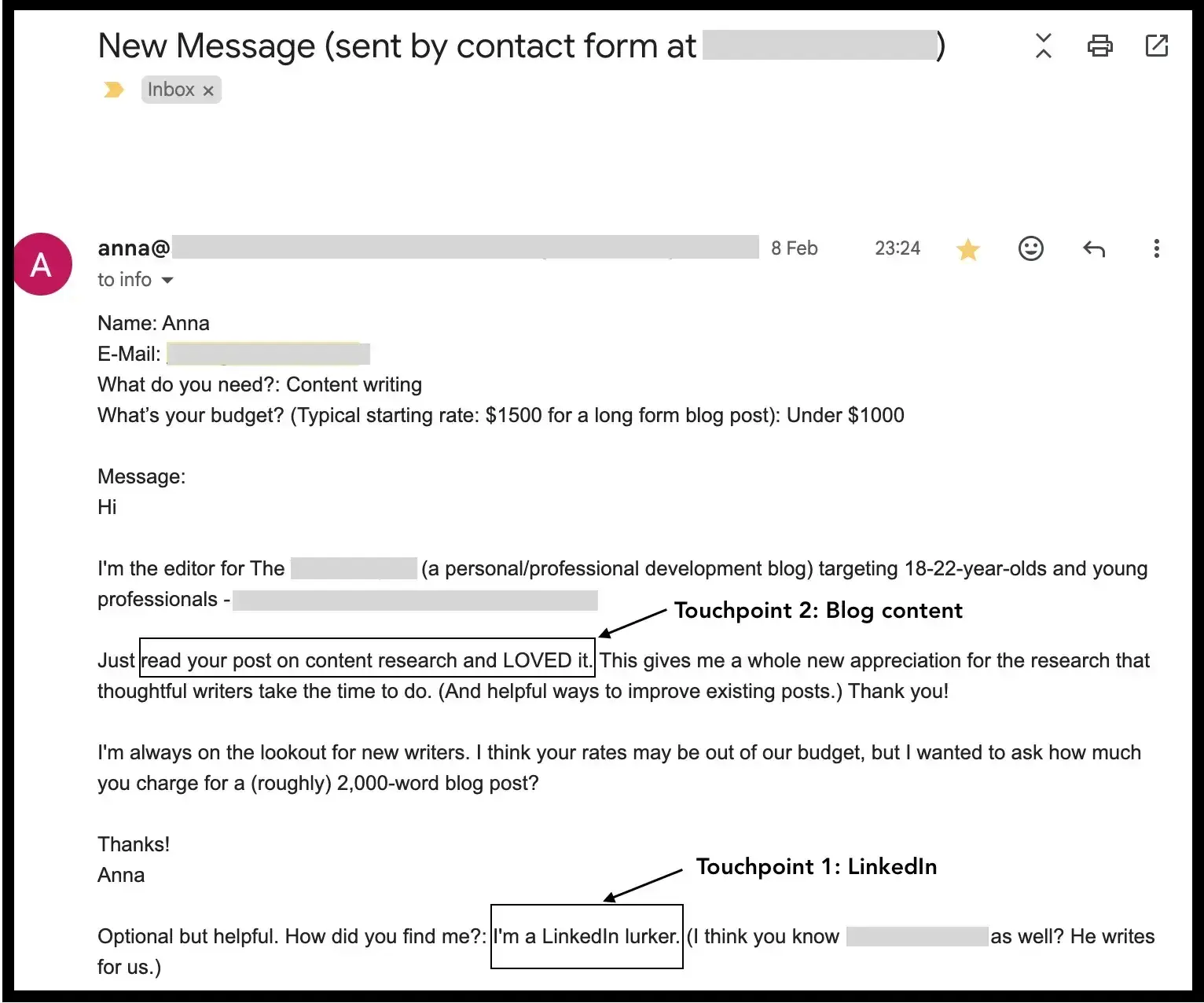
Optimizing this touchpoint: Understand that customers may lurk for months or years before they interact with your brand for the first time. Create content for this customer touchpoint with a long-term vision.
2. Online Advertisements
Have you ever noticed banner ads displayed at the top or sidebar of a webpage? Those are touchpoints that take prospects back to your website. For some brands, like Poliform below, it's an effective way to drive website traffic. Online advertising can be a very effective touchpoint when leveraged correctly.

Optimizing this touchpoint: I recommend creating landing pages for these ads to get the most out of your marketing budget and banner ads. This lets you re-target prospects, as opposed to sending those prospects to your landing pages.
3. Digital Marketing Content
Digital marketing content includes the materials your company publishes online to promote its brand. These materials could be:
- Educational videos.
- Infographics.
- Engaging blog posts.
- Social media posts.
Beyond analyzing the impact of your marketing content, it‘s vital to ensure the content you put out are on-brand and helpful to customers. Speak to customer pain points while creating content marketing that’s convincing and engaging.
Optimizing this touchpoint: Your digital marketing content sets customer expectations. A potential customer like me will assume that the quality of your marketing reflects the quality of your product.
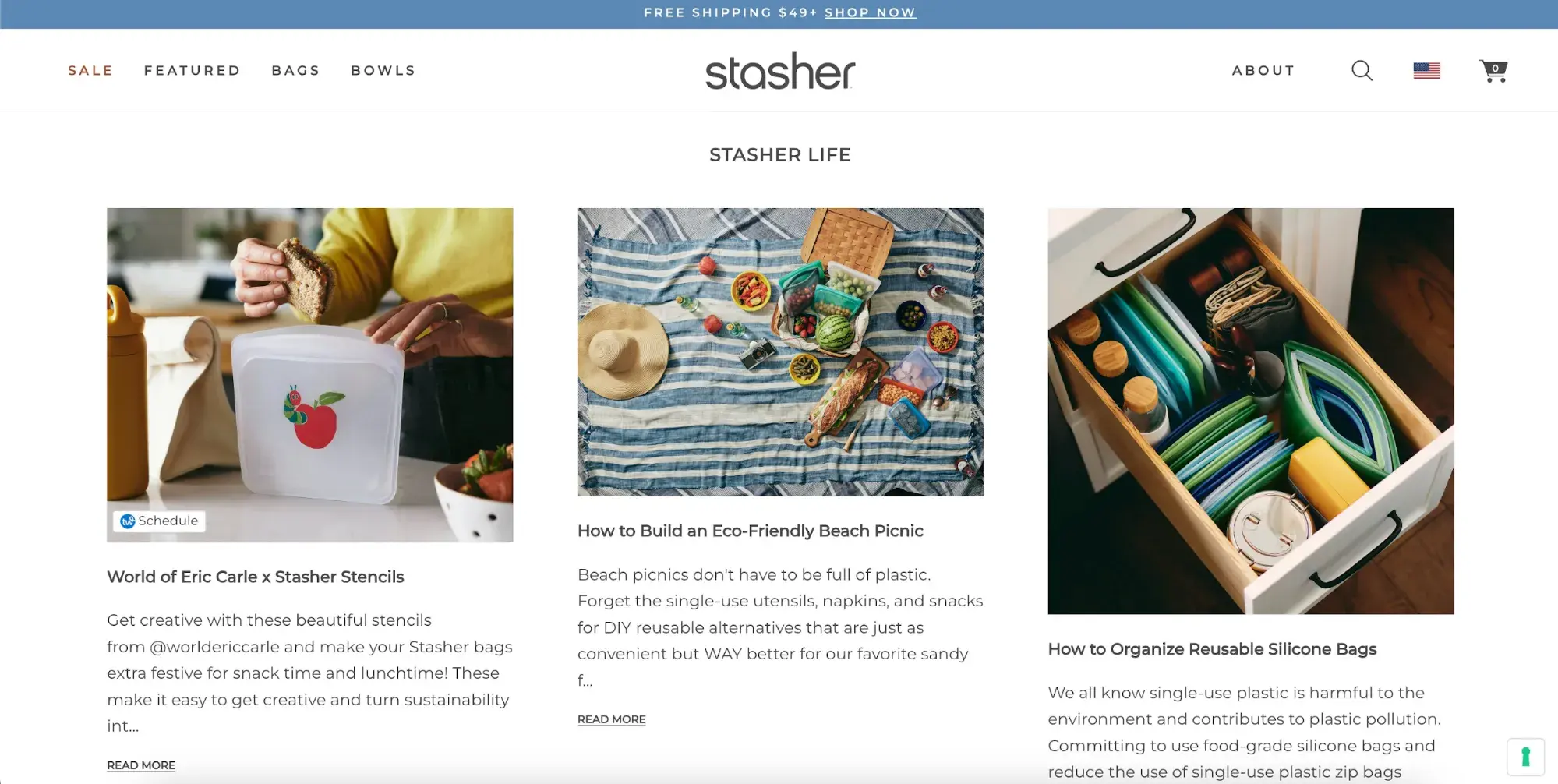
4. Company Events
If you're on a marketing or sales team, then you may have attended a conference this year where you stood in a booth to promote your company. These events are an excellent way to introduce your brand to customers who may not be aware of it.
One example is INBOUND, where companies from around the world meet to discuss marketing, sales, customer service, and other business topics. It's a great chance for business leaders to connect with new partners and discover strategies that can help their organizations grow. A core benefit of company events is that most attendees will be qualified leads for your business.

Optimizing this touchpoint: Approach events with a well thought-out plan for following up with leads who fit your ideal customer profile. Go in prepared and make a great first impression, then follow up.
5. Word of Mouth
When I'm making a purchase, I always opt for word-of-mouth referrals from people in my life or online. Why? A brand may lie in its advertising, but customers will always tell you what they really think of a product.
Like me, many customers say that their friends and family are their most trusted sources of referrals. Word-of-mouth referrals are even contagious: customers who were referred to your business make up to 57% more referrals than non-referred customers.
This makes it imperative to positively engage your existing customers at every touchpoint. It's not enough to just have a great product; if other touchpoints are negative, customers will still hesitate to refer your business. For example, do customers have a position touchpoint when they put in an inquiry with your customer support team?
Optimizing this touchpoint: A good product alone isn't enough to earn high customer satisfaction and coveted word-of-mouth referrals. Positive touchpoints are required at every level, from social media to chatbots and customer service and beyond.
6. Third-Party Reviews
I‘m a curious customer: This drives me to seek out reviews before making a purchase. A couple of one-star reviews don’t bother me. However, three is too many. It turns out I’m not alone.
According to Susie Ippolito, a former community manager for HubSpot's Trends, customer trust drops by 67% when reviews drop from just four stars to three.
Conversely, trust spikes to 95% at the five-star level. The bottom line? Work hard to increase customer satisfaction and earn great reviews for your business on third-party websites.
Optimizing this touchpoint: Incentive repeat customers to leave reviews, and then display them prominently in your marketing materials.

Customer Touchpoint Examples During a Purchase
A customer is preparing to make a purchase — celebrate! This is what all previous touchpoints have been about. But customer contact is more important now than ever before. Here are six touchpoint examples in the purchase phase of the customer journey.
7. Conversations with Company Representatives
Your sales interactions are the most direct point of contact with customers. These conversations, which take place virtually with sales reps and in your stores, have an immediate impact on the customer's purchase decision.
Optimizing this touchpoint: Have a thorough customer service rep onboarding process and maintain high standards.
8. Pricing Page
I feel exasperated when I want to buy a product, land on the pricing page, and all I see is “request a quote,” “schedule a demo,” or something similar. This is a turn-off; word on the street is that many people feel the same.
If you have a pricing page for your product, be transparent and put up the pricing. If you have no intention of displaying your price, make that clear on the homepage and avoid surprising customers with the extra step of reaching out for a quote or demo.
Optimizing this touchpoint: Make your language as clear as possible to avoid customer frustration.

9. Product Catalogs
Whether they're online or in hard copy, catalogs are an excellent medium for showcasing your product line. An image of the product, coupled with an enticing description, gives the customer everything they need to know before making a purchase.
Optimizing this touchpoint: Analyze your customer's buyer objections, then speak to these concerns in your catalog. Aim for clarity and ease of use to maximize this customer touchpoint.

10. Ecommerce
Ecommerce is an effective way to acquire customers and close deals because websites can be accessed globally, making it possible for an SMB in one location to provide products and services to a customer on the other side of the world.
Understanding the touchpoints within ecommerce can dramatically improve the customer experience for SaaS and other online companies. Such touchpoints during a purchase include:
- Information on your product pages.
- Live chat feature.
- Your shopping cart.
- Checkout page.
Optimizing each of these touchpoints is crucial for winning the sale.
Optimizing this touchpoint: Customers ask themselves if a website is secure enough before making a purchase online. Reassure users by offering clear product information (sizes, dimensions, etc.) as well as store policy (return policy, customer support email, etc.). Anticipate their questions.

11. Product Reviews
In today‘s digital age, product reviews are no longer just a pre-purchase touchpoint. Customers now have smart devices that can call up product reviews while they’re shopping in your stores or making a decision online.
Additionally, some online retailers include reviews on the listing page, allowing users to see what other customers think without navigating away from the page.
Optimizing this touchpoint: Engage with all written product reviews, thanking customers for providing feedback and showing how much you value their insights. With this approach, even negative reviews can turn into a positive touchpoint. The example below of an Airbnb host responding to a critical guest review is a great example of maximizing this touchpoint opportunity.
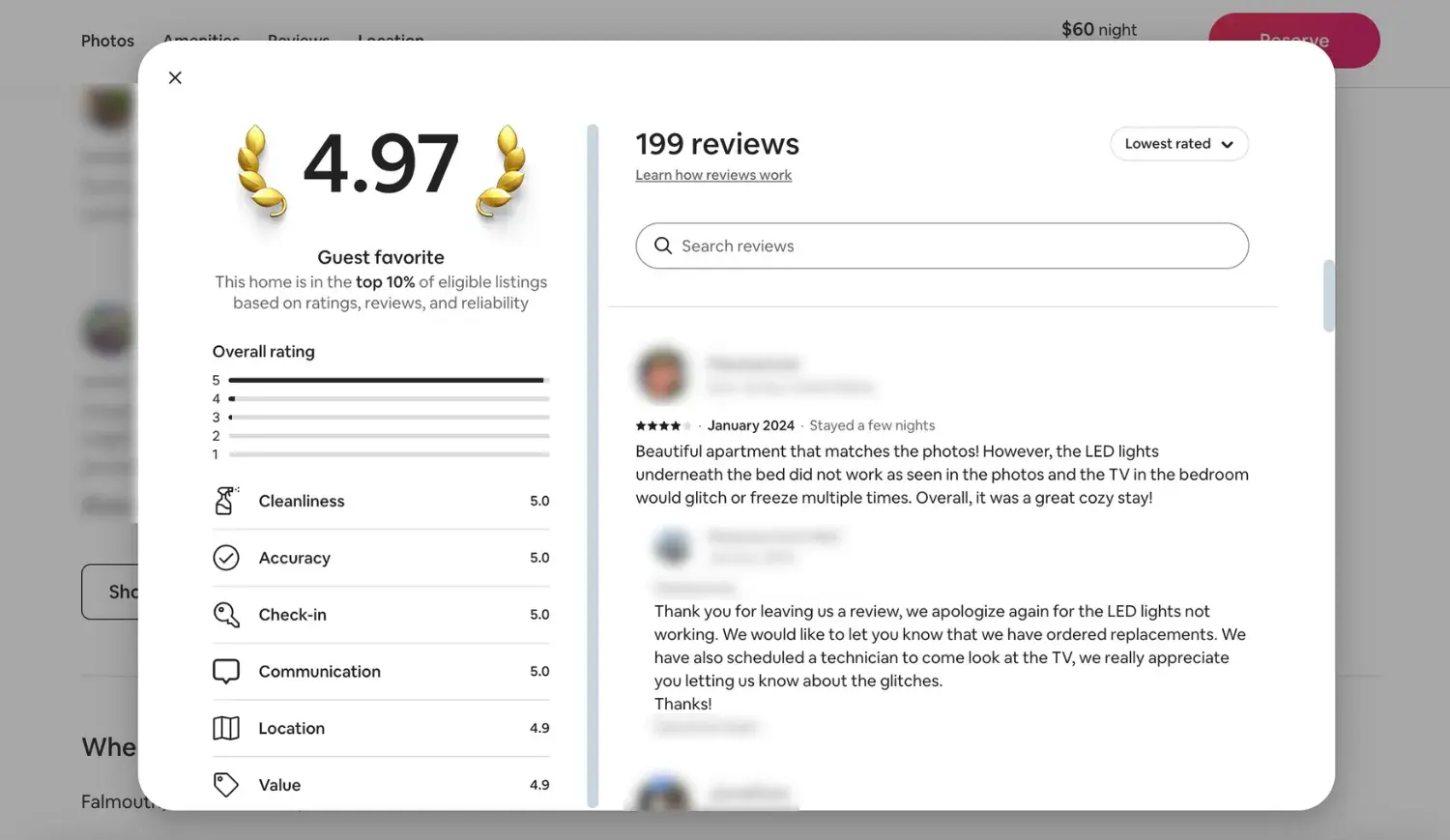
12. Point of Sale
This is the last touchpoint your customers will reach before making a purchase. That's because this is where your sales rep makes their case for why the customer needs your product. For all businesses, this is a momentous step in the customer journey.
Optimizing this touchpoint: Focus on speed and convenience at the point of sale. Offer multiple forms of payment and have trained associates handling these final sales to answer any questions about adoption that could sabotage the sale.
Customer Touchpoints Example After a Purchase
How do customers interact with your brand after they've made a purchase? Understanding this will help you identify customer touchpoints that impact your revenue most. Here are common touchpoint ideas.
13. Thank You Letters
One effective way to build customer rapport is by following up with a thank you letter. This can be an email, or, if possible, a handwritten note that thanks customers for their business. It's a great way to show customers you care and develop a long-term relationship with them.
If you're not sure how to start sending customer thank you letters, check out our guide on writing thank you letters.
Optimizing this touchpoint: Show gratitude to every customer at every tier of your business. A handwritten thank-you might be overkill for customers who make a small purchase on your website, but a smaller token of gratitude like an email or discount code for the next purchase will help your company be remembered.
14. Product Feedback Surveys
Product feedback surveys are sent after a purchase, and they evaluate the customer's experience with your product or service. If the customer leaves a negative review, the company can reach out to learn more about the issue. They then relay this information to the product development team, who makes enhancements to the next version of the product.
Beyond making customers know that you care, these customer feedback surveys might help you retain customers who are five times harder to get, according to customer acquisition studies.
Optimizing this touchpoint: When asking for feedback, showcase how the brand has used previous customer feedback. This incentivizes customers to share thoughtful ideas for improving your product.
15. Upselling/Cross-Selling Emails
Customer needs don't go away after a purchase is made. In fact, some customers have additional needs once they start to use your product.
This presents an opportunity for you to upsell or cross-sell customers on additional or premium items in your store. See an example of this in the image below.

Optimizing this touchpoint: Customize your cross-sell offers to each purchase. This will maximize conversion and expand customers' understanding of your brand offerings as it relates to their interests.
16. Billing Actions
Billing is often an overlooked touchpoint on this list. That‘s because it happens after a purchase occurs and has no direct influence on the customer‘s decision to buy your product. However, it‘s still a vital step in the customer’s journey because a negative experience can result in an immediate instance of churn if not addressed properly.
Worst part is, identifying churn as a result of billing challenges may be hard. That's where conducting regular surveys help in optimizing your billing process.
Optimizing this touchpoint: Review your billing process and look for improvement opportunities. Sit next to a member of your team who hasn't used the customer billing portal and have them work through it. Look for opportunities to improve the process or offer positive reinforcement to customers.
17. Subscription Renewals
Renewals are crucial to your revenue model if you're a subscription-based business. You need customers to renew their subscriptions to maintain steady growth for your business. This makes it important that you remove as much friction as possible from your renewal process. After all, it should be effortless for an existing customer to stay a customer after their contract is up.
Optimizing this touchpoint: Show the customer that you‘re thinking of their needs by making certain predictable steps easy to access. For example, how does a customer update their payment information or cancel? You can anticipate this question, and it shouldn’t require customers to speak with your customer support team.
Customer Touchpoint Examples in Customer Service
Speaking of customer service ... This is your most valuable customer touchpoint. Here are five examples and ways to optimize these interactions.
18. Customer Support Channels
Customer support channels are any platforms that service agents use to communicate with customers. This includes:
- Live chat.
- AI bots.
- Email.
- Phone support.
- Social media.
- Peer review sites.
- And more.
Optimizing this touchpoint: The list of support channels goes on and on. Businesses need to invest in omnichannel support if they want to create a convenient experience for all customers. Optimize this by choosing a product like HubSpot Service Hub that combines multi-channel communication into one convenient interface so no touchpoint is lost.
19. Customer Success Programs
A customer has a lot of direct contact with a company when in the wooing process. But what about after they purchase? Who's there to help them succeed? This is where a customer success program comes in.
Customer success programs have various touchpoints. When a customer success department recognizes a potential problem, it contacts customers to notify them of the issue or offer a solution. This demonstrates a commitment to the customer's goals, which builds additional rapport over time.
Optimizing this touchpoint: Improve customer success through both self-service avenues (like knowledge banks and AI chatbots) and direct contact with your success team. Some customers prefer a hands-on approach, and others will prefer to find the answers themselves — this aids both types of customers.
20. Customer Onboarding
The battle is not won after you win a new customer. You have to onboard your customer to truly win them. Customer onboarding is a popular touchpoint for service teams because many customers abandon products shortly after buying them.
Why does this happen? Either customers:
- Don't know how to use your product, or
- They don't have the time to learn how to use it
Both result in churn, making it essential for companies to invest in effective onboarding programs.
Optimizing this touchpoint: Onboard customers to your product as quickly as possible. Have your customer success team make immediate contact with new customers and equip them with materials to help them start using the product immediately.
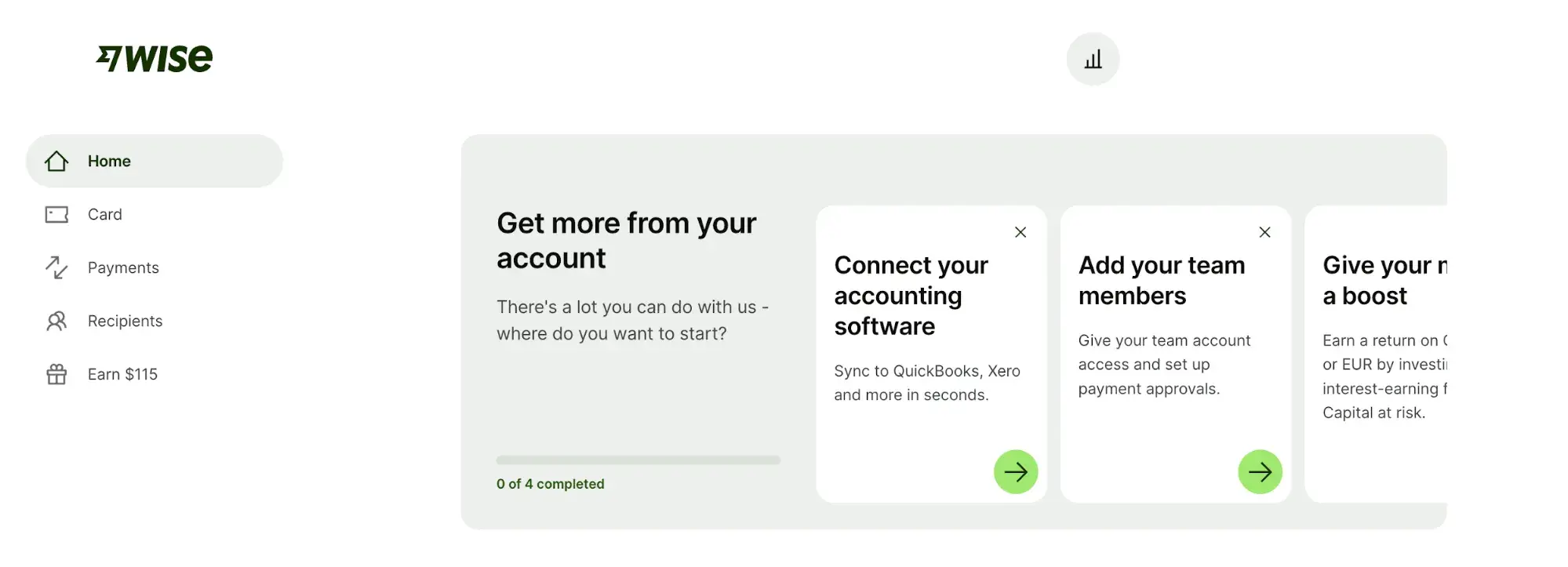
21. Customer Loyalty Programs
Loyalty programs strengthen your relationship with customers and turn them into lifelong advocates. By incentivizing people with exclusive rewards and discounts, they'll be more likely to share positive reviews about your business.
Optimizing this touchpoint: Make the enrollment process as frictionless as possible to incentivize signups. Consider having multiple types of loyalty rewards to reward customers with something valuable to them.
22. Self-Service Resources
When customers are in a hurry or only have a quick question for your support team, they don't want to spend 20 minutes waiting on hold for a rep. Instead, you can offer self-service resources that feature troubleshooting steps customers can take on their own. That way, they're not dependent on your service team for answers and can find solutions on their own time, making your product more convenient and easier to use.
Optimizing this touchpoint: Use AI to enhance your blog or knowledge base. This interactive approach to self-service will make this touchpoint more helpful for customers.
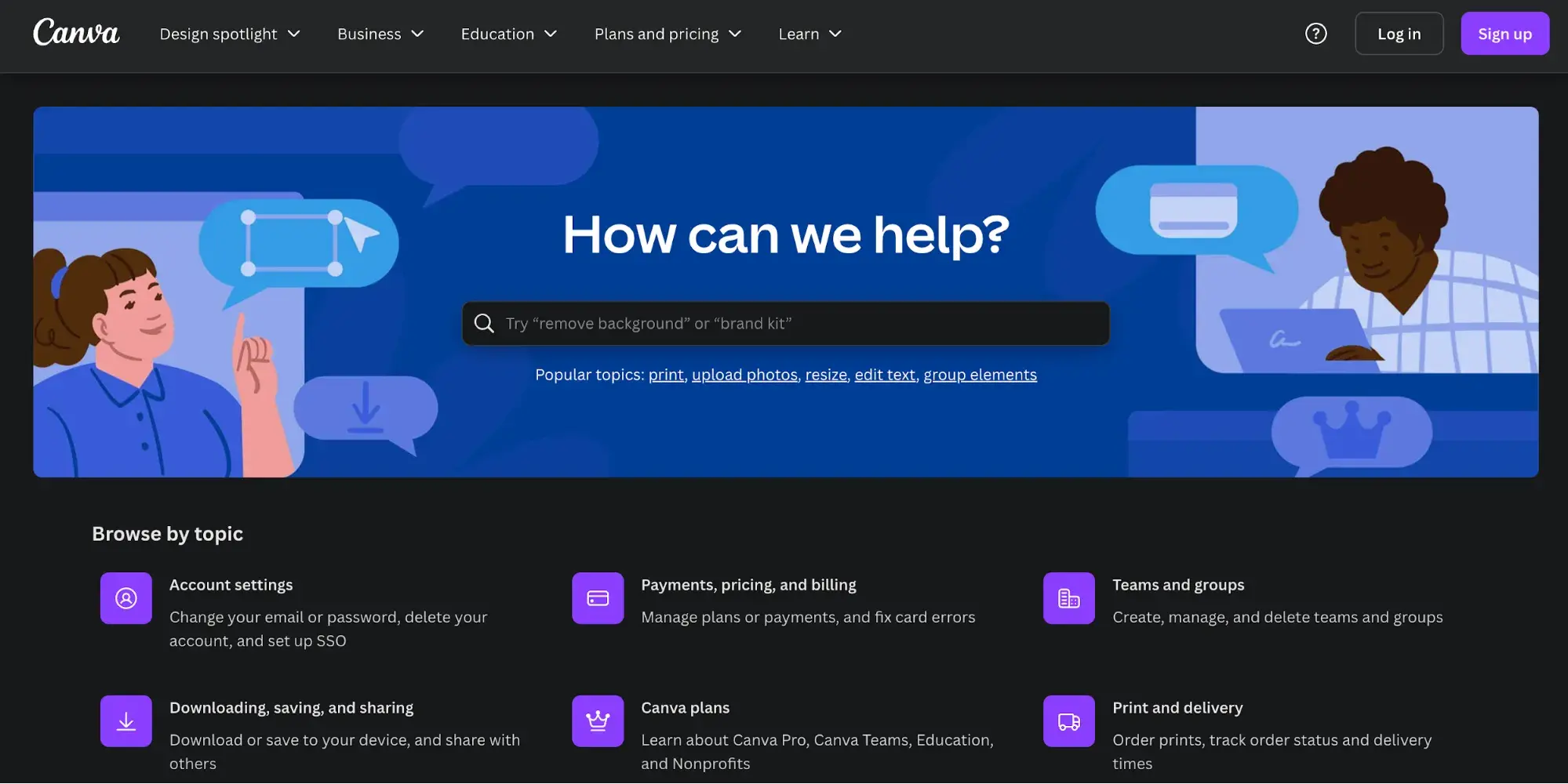
All of these touchpoints are essential for creating and analyzing your customer's journey. But how do you use them in your business? I'll explain that below.
How to Use Customer Touchpoints in Your Business
By using customer touchpoints, you'll exponentially improve the customer experience. But not all touchpoints will make sense for your company. For instance, if you‘re a SaaS business, you might not have an online catalog. And if you’re running the business on your own, your customer likely won't run into a sales team.
To create a custom customer touchpoint map, I recommend the following steps.
1. Put yourself in your customers' shoes.
First and foremost, put yourself in your customers' shoes and envision the steps they take as they make a purchase decision. Where do they look first? How do they reach a purchase decision? And what do they do if they run into problems using the product?
Let's take a look at an example customer journey below.
- The customer becomes aware of a problem and researches ways to solve their issue.
- After finding a solution, they search for a particular product. They look through product listings on Google and then explore offerings on retailer websites such as Amazon.
- They search for product reviews.
- After finding sufficient information, they purchase the product.
- They use the product but run into trouble. They look for articles and resources on how to solve the issue on their own.
- They reach out to a customer service representative.
After, match each of these customer actions to a certain touchpoint. Here's what that looks like:
- Touchpoint 1. A robust blog that covers commonly-researched issues by your customers.
- Touchpoint 2. A series of paid ads on Google‘s and Amazon’s product pages.
- Touchpoint 3. A collection of unsponsored product reviews on your website.
- Touchpoint 4. A portal for customers to easily check and see their order status.
- Touchpoint 5. Self-service options such as knowledge bases and product how-tos.
- Touchpoint 6. An easy-to-find customer service portal or phone number that allows them to get in touch.
2. Decide what's feasible based on your company size and budget.
Now that you have a rough idea of the resources and information your customer will need during their journey, it's time to decide which ones are easiest to implement based on your company size and budget.
If you sell a complicated product but run a one-person business, investing in a full-scale service desk with knowledge bases and ticketing features might not be feasible. But you could start by adding free live chat.
The key here is to find an alternative that‘s easy to adopt for you and your team and scalable as your business grows. You don’t want to be boxed in after your customer touchpoint strategy yields positive results.
3. Establish touchpoint tasks.
Deciding on the touchpoints is one thing; translating them into actionable tasks is another. You‘ve decided what’s feasible, and now it's time to turn it into action.
Here's what that can look like for the example referenced above.
First Touchpoint Tasks
- Create a strong cluster content strategy that solves for the customer.
- Decide on the first five posts, which will be published in four weeks.
- Outsource the content creation by hiring freelancers to write the content.
- Use the in-house marketing team to leverage buyer personas and current customer acquisition data.
Second Touchpoint Tasks
- Create a Google Merchant Center account and an Amazon seller account.
- Write unique descriptions for each product using the services of two freelancers.
- Source product photos and general information such as specifications, country of origin, sustainability score, and so on.
- Add product listings to Google and Amazon.
Third Touchpoint Tasks
- Add product reviews to the site using a WordPress review plugin or another solution.
- Invite current customers to write reviews by offering a 10% discount on a future purchase.
- Respond to reviews as they come in so prospects can see the brand is active.
You'd continue down the touchpoints list, adding tasks until you have a comprehensive checklist that everyone on your team can reference.
4. Leverage software tools to automate touchpoint tasks.
Use marketing, sales, and service software to ensure touchpoint tasks run smoothly with minor intervention.
Let‘s say you’ve decided to invest in social media marketing as the first touchpoint, but you have a three-person marketing team, and you don't know how to get started. You can consider a social media management tool such as HubSpot's Social Inbox (included in Marketing Hub). And if your team is new to social media management, you can have everyone take a social media certification course.
If you‘ve decided that one of your customers’ touchpoints is chatting with a salesperson, you'd invest in a CRM that helps your sales team keep track of all communication and automatically schedule follow-up calls.
If one of your touchpoints is a discount delivered via email, you'll want to use email marketing software to automatically send the message. This way, you won't need to manually type each email and send it to every customer.
And if one of your touchpoints is an easy-to-reach service desk, you'll invest in customer service software that can take care of ticketing — and even resolve simple inquiries with a customer service bot.
These tools can help you streamline your customer touchpoint process so that it progresses with minimal team intervention. As you serve more customers, no touchpoint slips through the cracks.
Use Customer Touchpoints to Enhance the Customer Journey
After reading all this, I hope you see that you can play a role at every step of the customer journey by identifying, planning for, and leveraging each customer touchpoint. Nothing is left up to chance. Instead, you provide targeted information at just the right time.
Now, it's time to identify customer touchpoints that impact your ROI most.
Whether you're a one-person business or an enterprise-level team, I recommend using touchpoints to enhance the customer experience, empowering you to retain more customers and grow better.
Editor's note: This article was originally published in January 2020 and has since been updated for comprehensiveness.
.webp)
Free Customer Journey Template
Outline your company's customer journey and experience with these 7 free templates.
- Buyer's Journey Template
- Future State Template
- Day-in-the-Life Template
- And more!
Download Free
All fields are required.
.webp)






![Customer Journey Maps: How to Create Really Good Ones [Examples + Template]](https://www.hubspot.com/hubfs/customer-journey-map_13.webp)

![Is The Customer Always Right? [What It Means + Why It Matters]](https://www.hubspot.com/hubfs/customer-is-always-right-origin-1-20250202-6448090.webp)



![Everything I Know About Product Experience [+ 4 Key Product Elements]](https://www.hubspot.com/hubfs/product-experience-1-20250107-4891043.webp)
